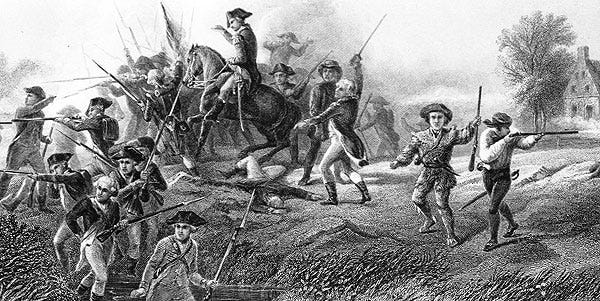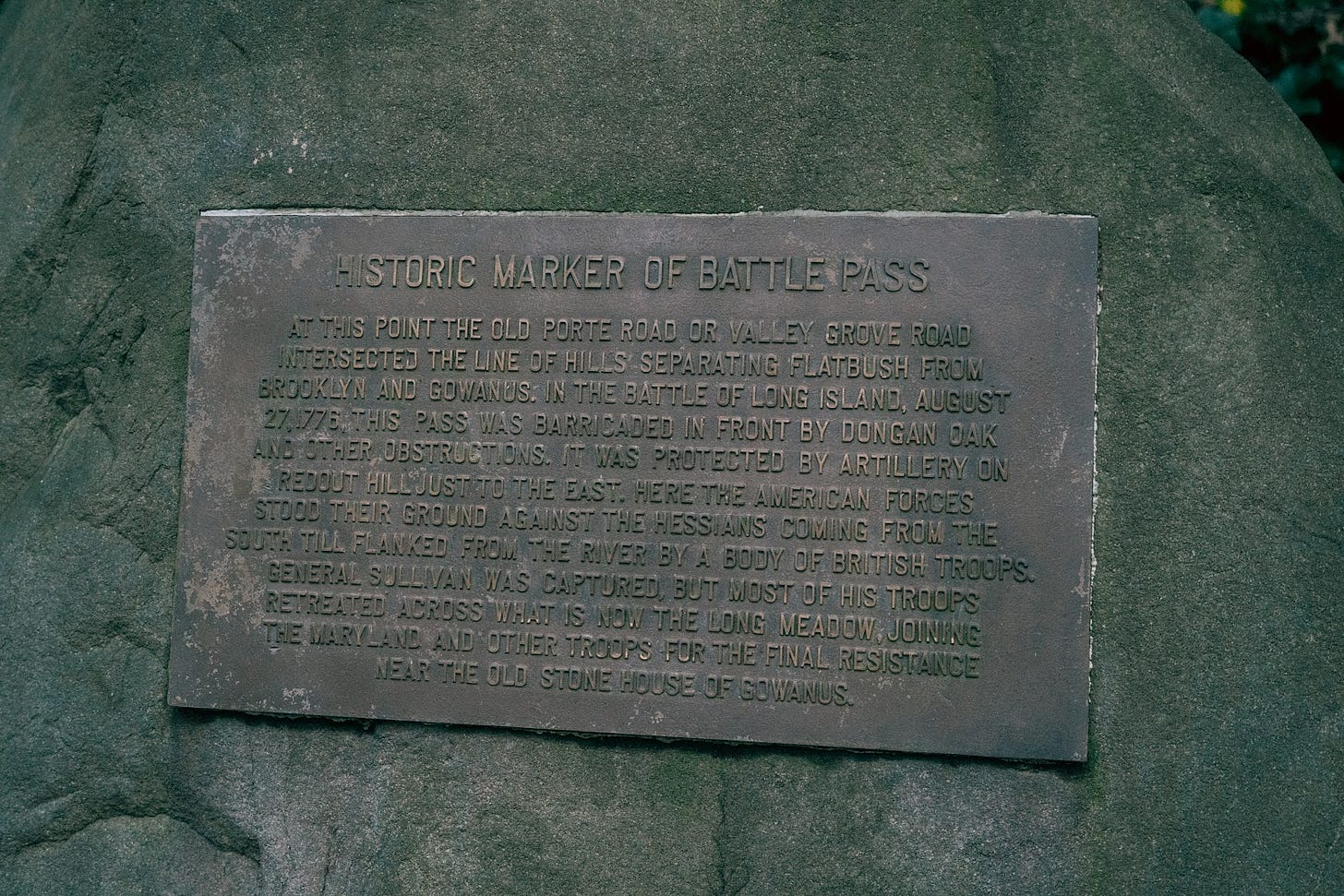Park Slope And The Battle Of Brooklyn
Tracing the revolutionary battle that unfolded in our neighborhood
Nick Bello is a writer and photographer based in Park Slope. He loves to capture local scenery as well as research local history. Follow him on Instagram @nbello8 or on substack at:
The story of the Revolutionary War is a classic David vs. Goliath story. The underdog of mostly farmers and tradesmen (Continental Army) going up against and defeating one of the best—if not the best—militaries of that time. Most of the key battles taught in schools were victories like the Battle of Trenton, Battle of Cowpens and the final battle at Yorktown. However, it's the defeats that made us who we are and it just so happens that one of the most important defeats that helped shape our nation happened in Brooklyn.
In the summer of 1776, New York was the center of the Revolutionary War as General George Washington had gradually sent his troops in the spring to defend the important port of New York from the British. The British however would not arrive in New York until late June, giving Washington an ample amount of time to fortify both Manhattan and Brooklyn. By August, the Continental Army would have six fortifications and a few redoubts scattered around what is now South Brooklyn. On August 22, the British Army under the command of General William Howe, General Sir Henry Clinton and General Charles Cornwallis would board ships from their base on Staten Island and sail over to Gravesend Bay, invading Long Island and setting up what would become the Battle of Brooklyn, the largest battle of the Revolutionary War.
At around 10pm on August 26, the first shots of the battle would be fired when British soldiers were caught foraging in a watermelon patch near the Red Lion Inn, a tavern which was located near the southwest corner of what is today Greenwood cemetery. The Continental forces here of about 1,600 men from Maryland and Delaware were led by William Alexander also known as Lord Stirling. After the small skirmish in the watermelon patch, the British returned with reinforcements, prompting the Continental Army up the Gowanus Road to higher ground. The British forces tried to outflank them by taking what is today known as Battle Hill (located on 23rd street and 7th avenue in Greenwood Cemetery) leading to the bloodiest fighting of the battle where 86 British troops would be killed or wounded while the Continental forces would be surrounded and eventually captured.
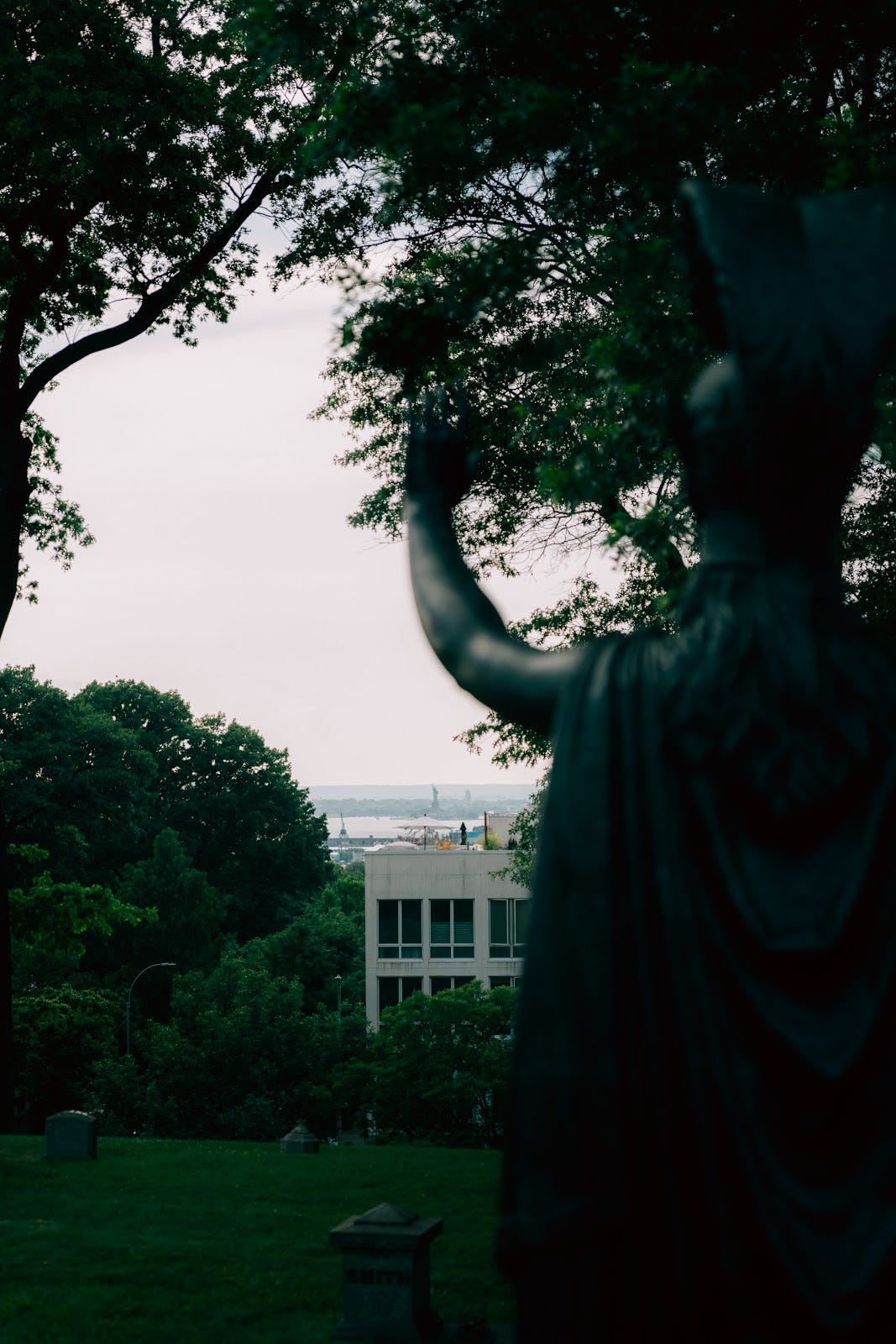
This however was a diversion and the larger British force composed of Hessians (German mercenaries) and Scottish Highlanders would attack from the Flatbush Pass (around present day Flatbush Avenue). To make matters worse, 10,000 British troops under the command of General William Howe had also been marching through the darkness to outflank the Continental Army on the Jamaica Road. Howe and his men met no resistance on their flanking mission, making their way up the Jamaica Road to the Rising Sun Tavern (located at present day Broadway and Jamaica Avenue). After hiding out in the woods around the tavern, Howe, Cornwallis, Clinton, and General Hugh Percy broke into the tavern and forced the tavern keeper and his son to guide them through the woods to a point around the Jamaica Pass. It is here Cornwallis would capture a small patrol of American troops who offered little resistance.
In the morning hours of August 27, the Hessian troops at Flatbush Pass would begin their advance to assault the American positions located in what is present day Prospect Park. The American forces had cut down a large white oak—known as the Dongan Oak, named after Provincial Governor Thomas Dongan—and placed it across the pass. This coupled with the dense forest made the job tougher for the Hessians and Highlanders. Nonetheless their advance succeeded leading to gruesome hand to hand combat and bayonet charge in the forest, eventually leading to a retreat by the Americans to Brooklyn Heights. Those who were unable to retreat were eventually tracked down and bayoneted by the ruthless Hessians. A lucky 60 Americans were able to surrender but most of the retreating American forces were slaughtered.
As the day wore on, the American forces were slowly surrounded from all sides as they retreated down towards the Gowanus Creek. At this point the Americans' only hope was to escape across the creek and into Brooklyn Heights as the British Army was bearing down on them. Lord Stirling ordered the majority of his troops to cross the creek but left a small contingent of 400 Maryland troops which would be later known as the Maryland 400 to fight off roughly 2,000 British troops at the Old Stone House. This is the most critical moment of the battle as the Marylanders facing total annihilation were able to fend off the British troops, charging six separate times before eventually surrendering. Cornwallis would go on to say later that, “General Lord Stirling fought like a wolf.” General Washington while watching the battle unfold on a redoubt in what is today Cobble Hill is reported to have said, “Good God, what brave fellows I must this day lose.” Although they had surrendered, Stirling and the Marylanders bought the Americans enough time to escape across the creek and live to fight another day. Stirling was eventually surrounded by the British but refused to surrender to them. Instead, he broke through their lines and surrendered to the Hessians. 256 Americans were killed and hundreds were wounded when all was said and done at the Old Stone House. On the corner of 9th Street and Third Avenue against the wall of the American Legion Post a sign reads, “Here lie buried 256 Maryland soldiers who fell in the Battle of Brooklyn.” There is contention however on where exactly the Maryland soldiers are buried and many believe they are buried elsewhere.
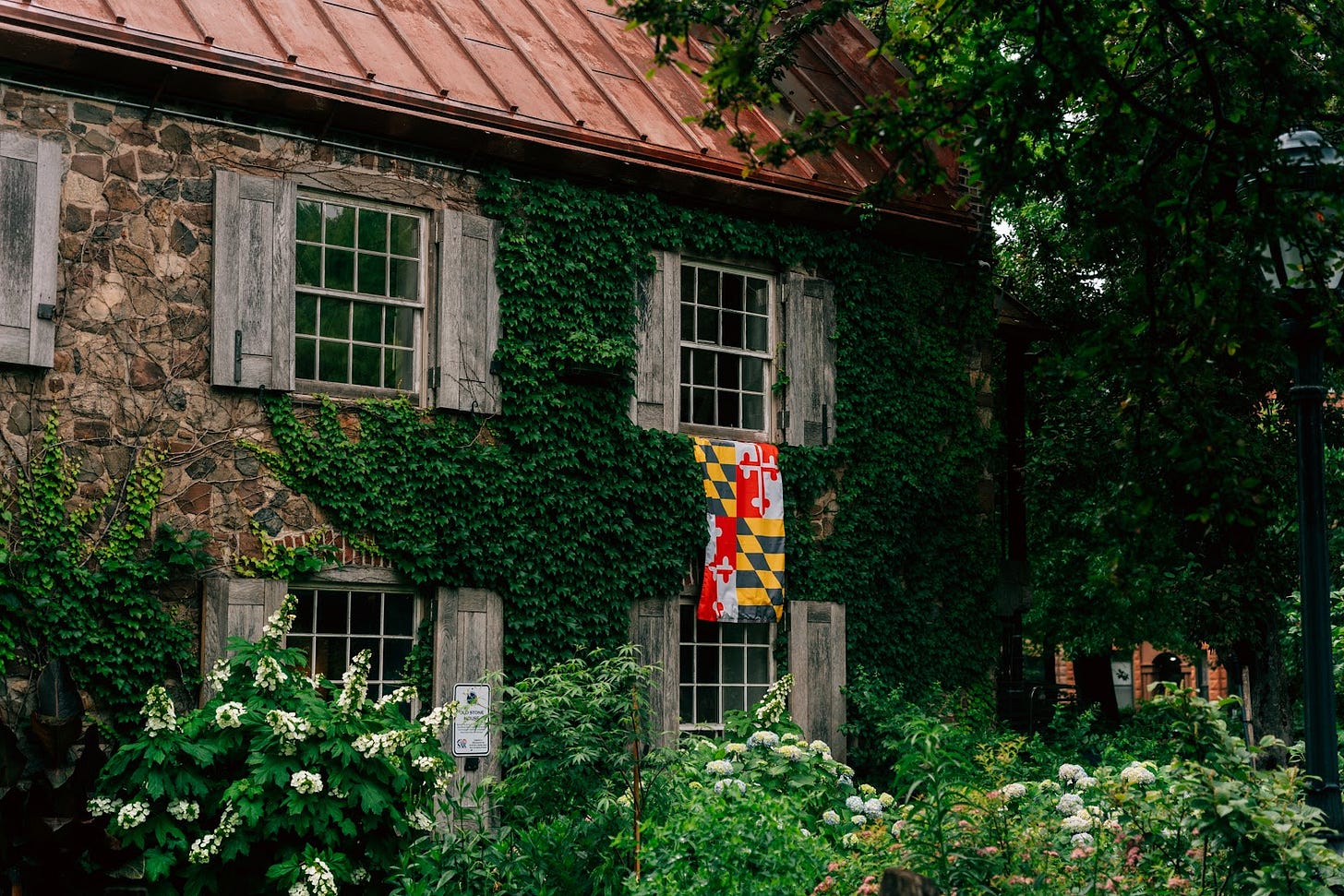
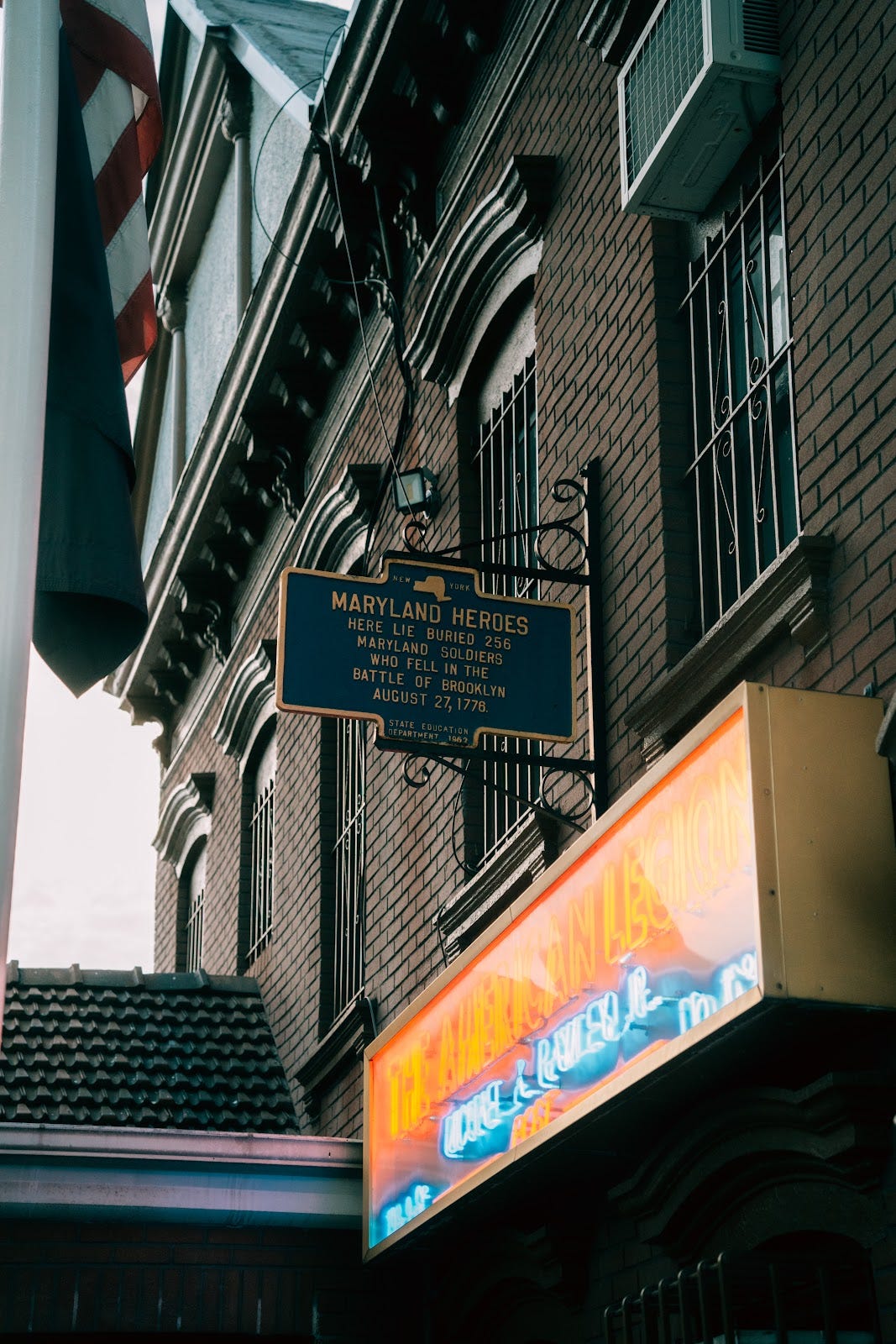
In the coming days General Washington would evacuate his men from Brooklyn utilizing a ferry point in present day DUMBO. The evacuation was an impressive feat in and of itself as more than 9,000 troops would make it safely out of Brooklyn under the noses of the British Army as no casualties were reported. While the Battle of Brooklyn was considered a massive loss and an embarrassing one at that for Washington, it did save the Continental Army from complete annihilation as they would continue to fight and eventually win the war, establishing that nation which we live in today.
~~ Unlock the rest of this article, including a self-guided tour of key Revolutionary War sites in Park Slope and beyond — plus a map you can follow on your next walk. ~~


